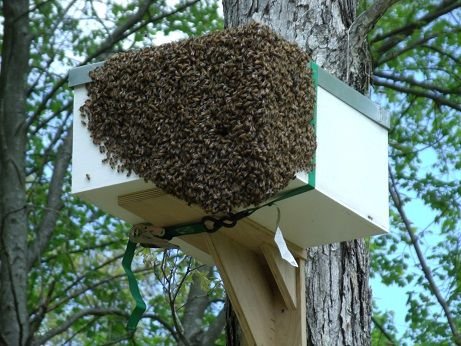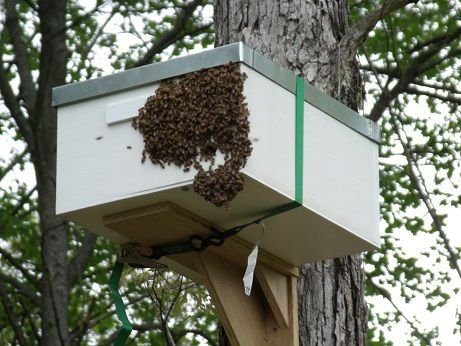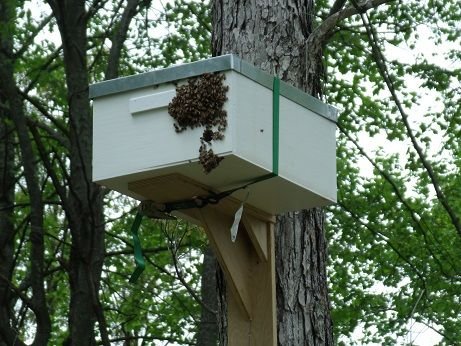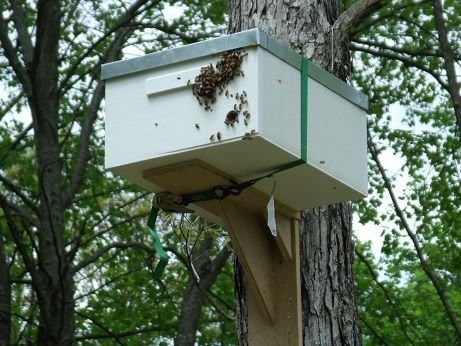My very favorite part about beekeeping is catching swarms. Each spring the honeybee colony will try to reproduce by making a bunch of new queen cells and just before the new queens hatch the old queen and half of the worker bees will leave the hive and look for a new place to live.
If you are lucky enough to be standing nearby you'll see the hive erupt in activity as thousands of bee pour out of the hive and take to the air. The bees are quite docile during swarming but the swirling cloud of insects is very intimidating. After a few minutes the swarm usually settles on a tree branch and forms a solid looking mass with the queen in the center. I caught the swarm in the picture above at this stage by cutting the entire branch free and shaking the bees off into an empty hive.
Scout bees will fly out and explore every available nest site in the neighborhood until they find an inviting location. From the colonies point of view, the ideal nest site
- is up off the ground out of the reach of bears
- has a volume of about 40 L
- has an opening that is about 4 cm in diameter
- smells like beeswax and propolis
You can also catch a swarm by building an artificial nest site that meets their requirements and placing it near a hive that is likely to swarm. A drop of lemongrass oil or a commercial product called Swarm Commander also helps.
The series of pictures shows a nice big swarm on the outside of a swarm trap as they moved into their new home.




I usually leave the bees in their new home for a few days so that they can start building some comb on the frames in the trap. Swarms are usually eager to build comb, so you really need to give them a good place to build it. If you just catch the swarm in an empty box they will build comb all over and you will have to cut it all out to move them into a new home. Trust me, nobody is going to enjoy that process.
If you are lucky enough to know the location of a wild bee tree, swarm trapping is an excellent way to propagate their genes without harming the mother colony at all. It also works to catch swarms that might escape from a managed colony.
Even if I never harvested a drop of honey from these bees it was so much fun to catch them that I would probably do it anyway.
